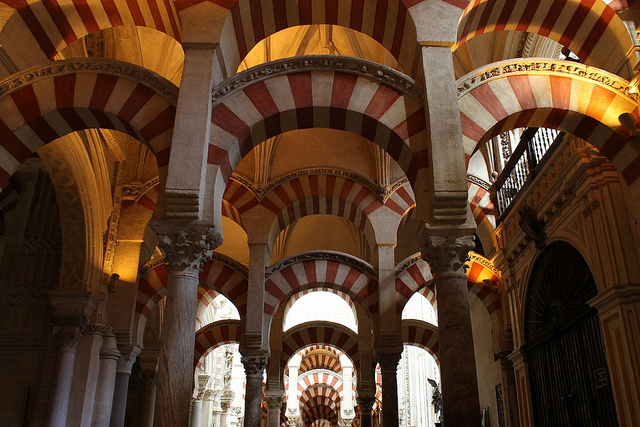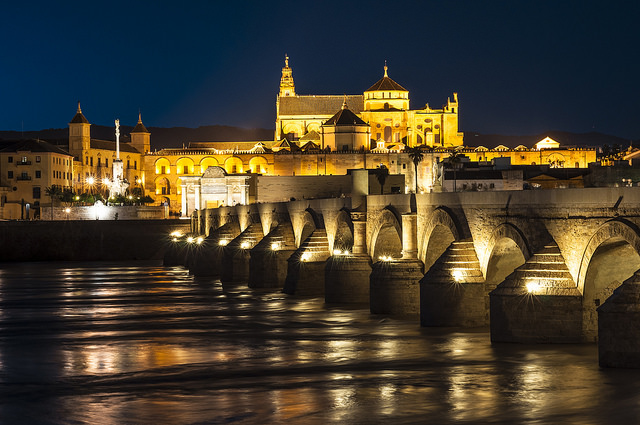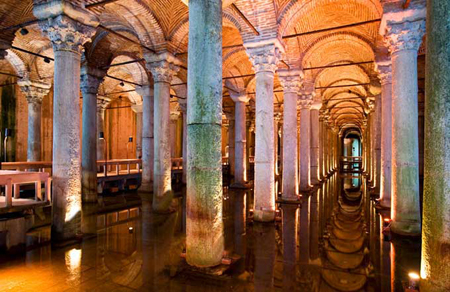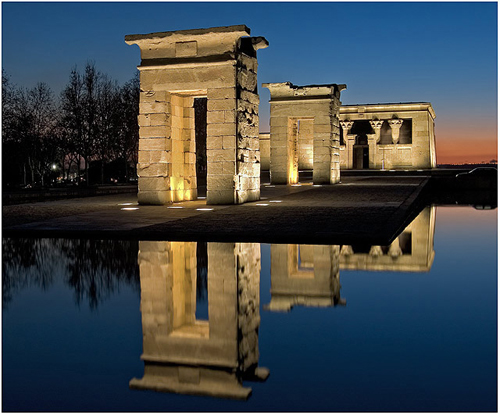When someone mentions the city of Córdoba, what images come to mind? Sun, heat, flamenco, Andalusia? We are betting you can’t avoid all those stereotypes, as well as that of the Great Mosque of Córdoba. Located within the largest urban space in the world and declared a UNESCO World Heritage Site, it is the most beautiful and unique building in Spain, according to British writer Gerald Brenan. And even if you don’t agree with that statement, there is no denying that the 3rd largest mosque in the world (23,000 m2) cannot be overlooked. Although it is considered to be a cathedral nowadays, we will refer to it as a mosque on this post, as it is better known under that name.

A Bit of History
Construction of the Great Mosque of Córdoba took nine centuries to complete. In the year 786CE, Abd Al-Rahman started building over the area where the Visigoths had previously erected the Basilica of Saint Vincent. In fact, prior to the basilica, the Romans had established the Temple of Juno on the same site. Thus, that area of land had been built on for centuries. The result of the first stage of construction was a large hall with 11 naves and 110 marble and granite columns topped with Paleochristian and Byzantine capitals, with a series of horseshoe and pointed arches. As a fun fact, the Great Mosque of Córdoba is the only mosque oriented to Damascus instead of Mecca because Abd Al-Rahman felt nostalgia for that city.
The year 833 CE marked the start of the first of three extensions of the mosque, adding 8 archways; followed by a couple more in the years 964 CE and 987 CE. The second of said extensions added a Mihrab, a splendid jewel of marble, stucco and Byzantine mosaics with a dome shaped like a seashell. The third extension doubled the size of the mosque, and it included 8 new naves and the beautiful Patio de los Naranjos.
With the Reconquista of Córdoba by King Ferdinand III of Castile in 1236, the mosque was turned into a Christian cathedral, and has remained so to our day. A very controversial historic event was the construction of the Capilla Mayor chapel and its Renaissance Gothic Cross between the years 1523 and 1607, as it was a considerable modification to the mosque-cathedral’s overall appearance. Years later, in 1984, UNESCO listed the building as a World Heritage Site.
The end result of this journey is a Spanish monument of great importance in terms of Islamic architecture, and an excellent example of Ummayad Hispano-Islamic art.

Our Suggestions
A visit to the Great Mosque is sure to astound in itself, but since we’re already at it, why not try to make it a bit even more pleasant? Our first suggestion is to visit during the early hours of the day, to avoid the usual crowds of tourists. The prayer hall with its myriad columns is best enjoyed in solitude… In addition, there are nightly visits to the Great Mosque of Córdoba since 2010, where the visitor can get acquainted with the temple through visual aids like lighting and projections, as well as sounds that take one back in time through history in a very creative way. To end with, we would also suggest visiting the city of Córdoba during the milder season, avoiding the hot summer months. And if you have any doubts about where to stay, you can always browse through our stunning apartments in Córdoba.
For further information and tickets for the Great Mosque of Córdoba follow the link below http://www.mezquitadecordoba.org/.

 English
English Français
Français Deutsch
Deutsch Italiano
Italiano Español
Español
